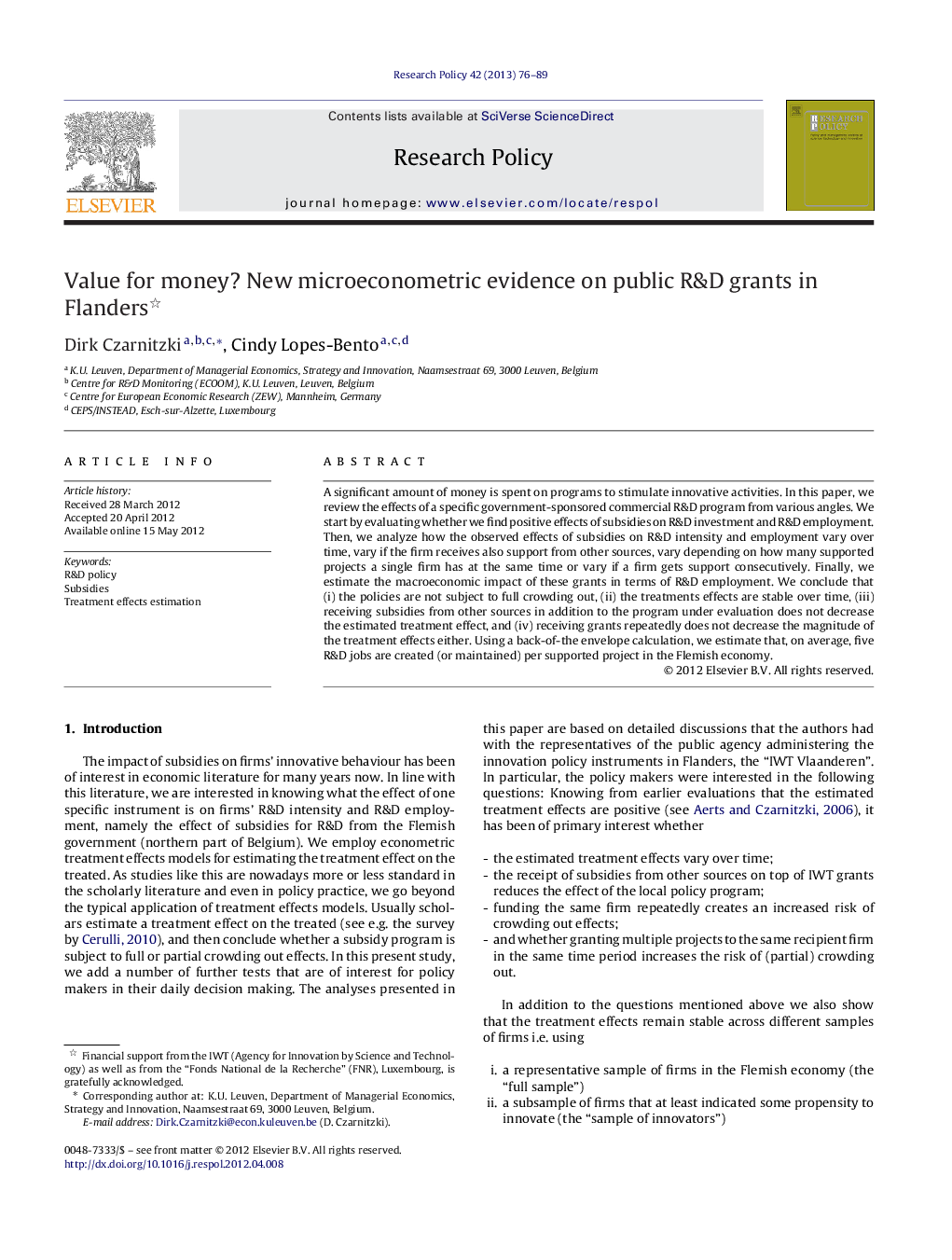| Article ID | Journal | Published Year | Pages | File Type |
|---|---|---|---|---|
| 984685 | Research Policy | 2013 | 14 Pages |
A significant amount of money is spent on programs to stimulate innovative activities. In this paper, we review the effects of a specific government-sponsored commercial R&D program from various angles. We start by evaluating whether we find positive effects of subsidies on R&D investment and R&D employment. Then, we analyze how the observed effects of subsidies on R&D intensity and employment vary over time, vary if the firm receives also support from other sources, vary depending on how many supported projects a single firm has at the same time or vary if a firm gets support consecutively. Finally, we estimate the macroeconomic impact of these grants in terms of R&D employment. We conclude that (i) the policies are not subject to full crowding out, (ii) the treatments effects are stable over time, (iii) receiving subsidies from other sources in addition to the program under evaluation does not decrease the estimated treatment effect, and (iv) receiving grants repeatedly does not decrease the magnitude of the treatment effects either. Using a back-of-the envelope calculation, we estimate that, on average, five R&D jobs are created (or maintained) per supported project in the Flemish economy.
► The study confirms positive effects of public grants on R&D investment. ► We allow for heterogeneous treatment effects, highly relevant for policy makers. ► The treatment effects do not decline if firms are funded repeatedly. ► The treatment effects proportionately increase as response to receiving multiple grants. ► One subsidized project creates or secures five R&D jobs in the economy, on average.
